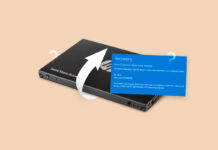 The sudden disappearance of your files is cause for concern. While they may simply be hidden, they could just as well be temporarily lost due to some form of damage your hard drive has suffered from.
The sudden disappearance of your files is cause for concern. While they may simply be hidden, they could just as well be temporarily lost due to some form of damage your hard drive has suffered from.
We’ll tell you how this might’ve happened. Read on to find out what you should do if your files disappeared from an external hard drive and how to recover any that were lost or deleted.
Table of Contents
Why Files May Disappear From a Hard Drive
There are a number of reasons why the files on your external hard drive might’ve disappeared. Here are some common problems that cause your files to become hidden, deleted, or otherwise lost.
| Problem | Description |
| 👻 Marked as hidden | Files and folders have attributes. If the hidden attribute has been applied to your files/folders, they will not appear in File Explorer like normal. |
| ⌨️ Accidental deletion | Files can be deleted in an instant. If you accidentally knock the delete key, it’s easy to miss the mistake if your focus is elsewhere. |
| 🦠 Malware | Malware, like viruses, can modify your files and folders, as well as delete them. Consider scanning your external hard drive for malicious software using Microsoft Defender Antivirus before recovery. |
| ❌ File system corruption | If the file system of your external hard drive has become corrupted, you won’t be able to access your files as you normally would. This requires data recovery. |
| ❗ Bad sectors | An influx of bad sectors is a sign of hard drive corruption. If a bad sector appears and your hard drive didn’t have an opportunity to move the data to a spare sector, that data may disappear and become irretrievable. |
How to View Files on External Hard Drive
There are various ways to view files on your external hard drive. However, be mindful of what file system the external hard drive is using. You cannot natively access files on a Mac hard drive using Windows 10, for example.
Method 1:File Explorer
File Explorer is the most common method of viewing your files. If your external hard drive doesn’t automatically appear when you connect it, manually access it using the following instructions:
- Click the File Explorer icon on your taskbar or search for it using the search menu.

- Click This PC then access your external hard drive.

Method 2:Run
You can jump straight to your external hard drive using Run if File Explorer isn’t working and you know the drive letter assigned to it. Follow these steps:
- Press Windows + R on your keyboard.
- Type
D:\. Replace D with your own drive letter (e.g. E:\) and press Enter.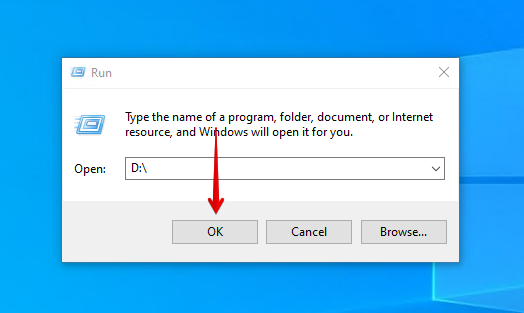
Method 3:Disk Management
Disk Management is used to manipulate and manage the drives connected to your computer. It also allows you to open your external hard drive to view your files. Open your external hard drive’s contents like so:
- Right-click Start and click Disk Management.

- Right-click the volume of your external hard drive and click Open.
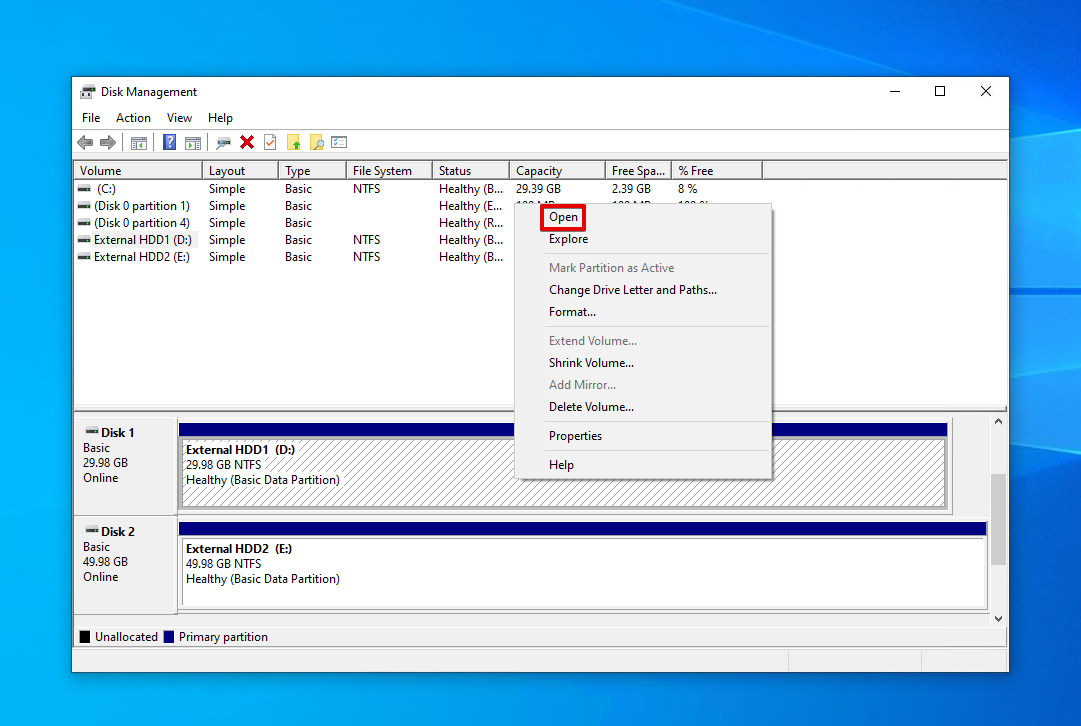
How to Find Missing Files on External Hard Drive
Before we move on to recovering the lost files, we should first check if the files are hidden. For instance, if a folder disappeared from your external hard drive, it could just be hidden. Other times, it may just be in a folder that you haven’t checked yet.
Method 1:Windows Search
If there is a specific file or folder you’re looking for, try doing a quick search using the Windows Search function first. All you’ll need is its file or folder name.
- Click the Search box in the taskbar and enter the file or folder name.
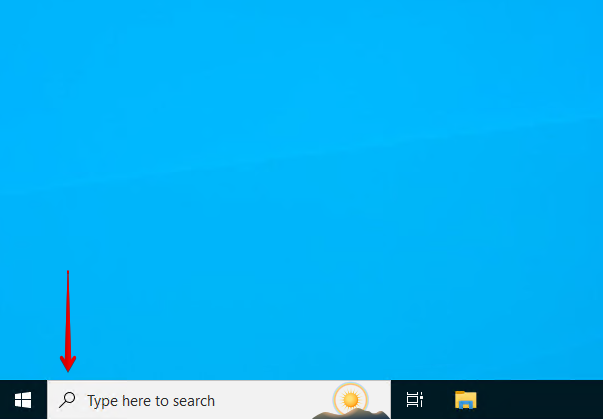
- Search the results for the file or folder and open it.
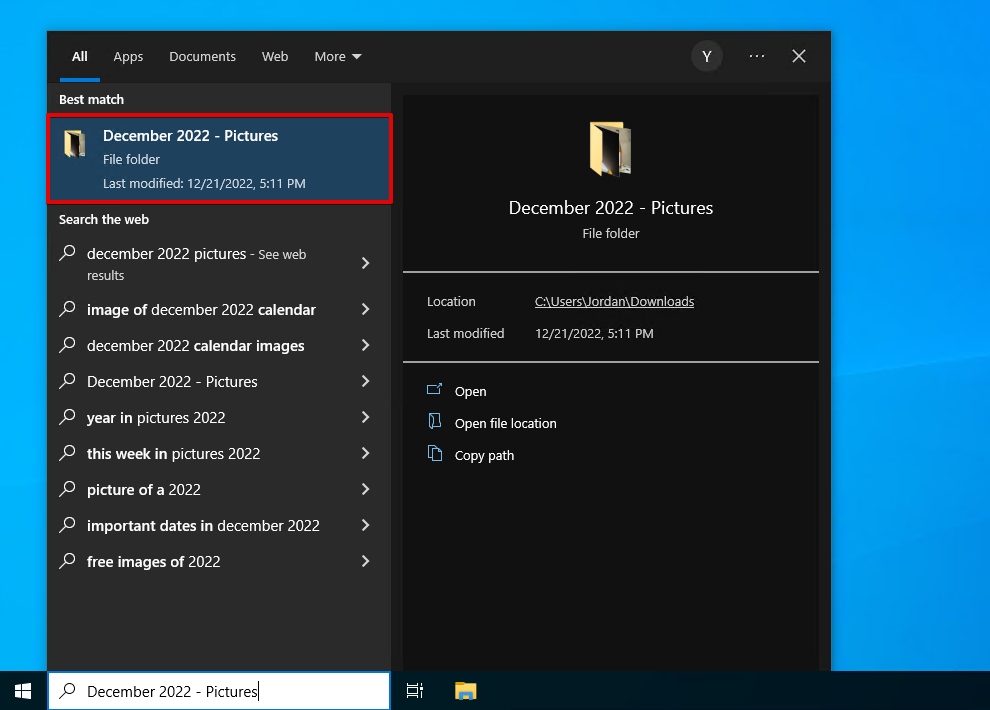
Method 2:File Explorer
You can also search for data from within File Explorer. It may even be faster than other methods in some cases, as you can choose to search specific folders and reduce the overall search time.
- Open File Explorer.
- Navigate to a parent folder of where the files once were (or, just start from This PC) and enter your search term in the search box. Press Enter.
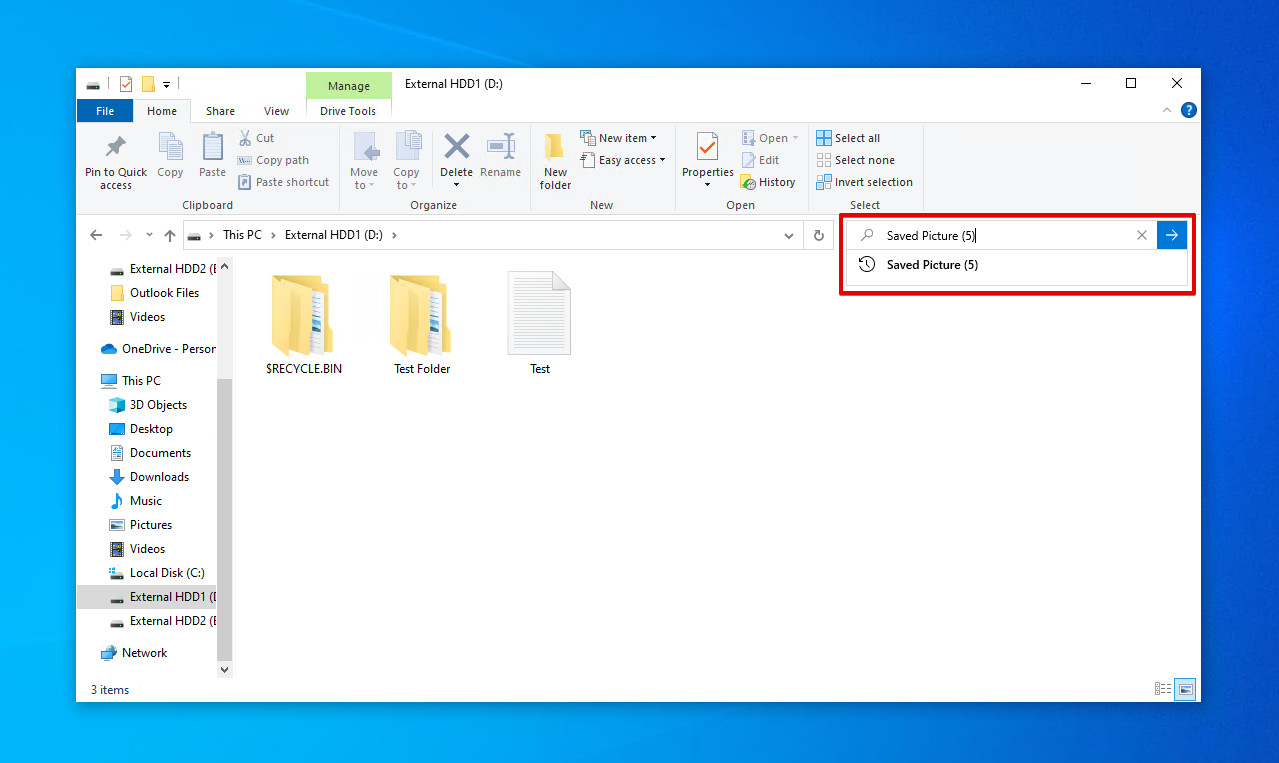
Method 3:Show Hidden Files
Windows hides essential system files to avoid them accidentally being tampered with. If some of your files were marked as hidden too, you won’t be able to see them like other files. Instead, you must show hidden files on the external hard drive first.
- Open File Explorer.
- Click View > Options > Change folder and search options. (Windows 11 user? Click View > Show > Hidden Files instead and skip the rest of the steps).
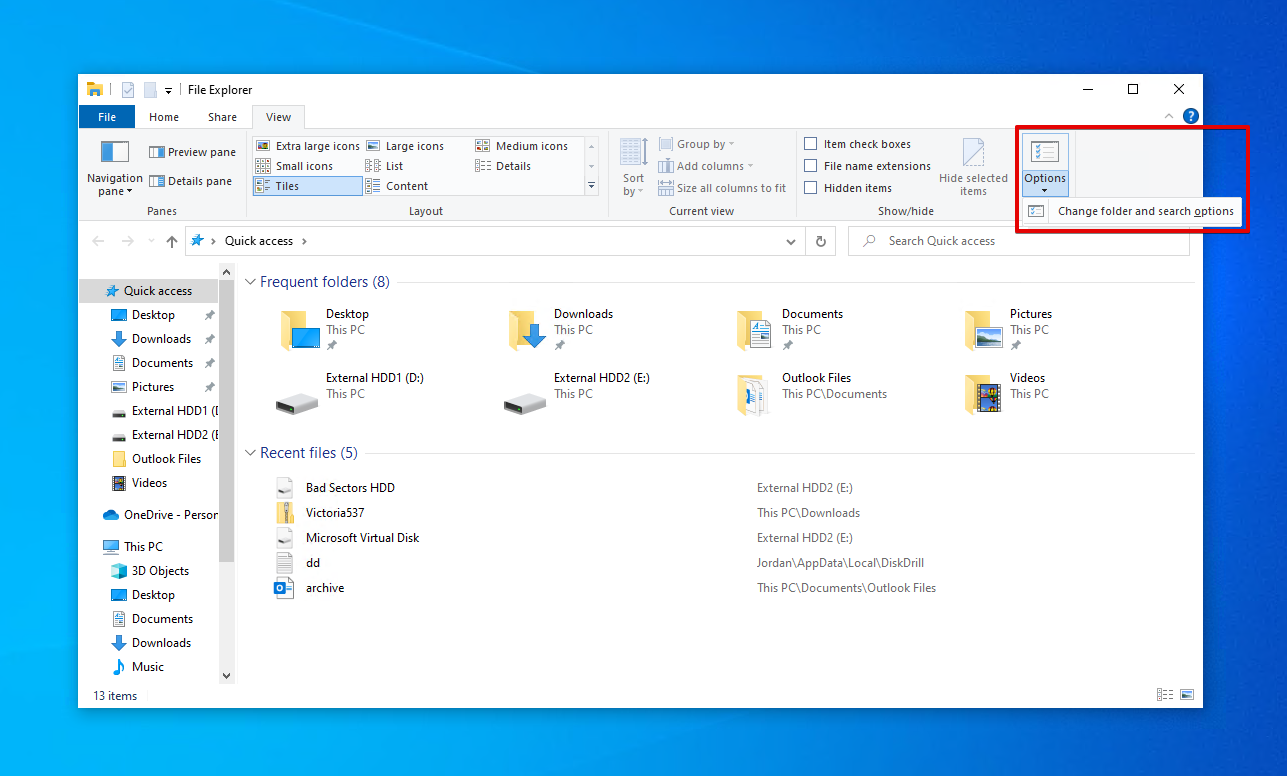
- Click View, then in Advanced Settings, enable Show hidden files, folders, and drives.
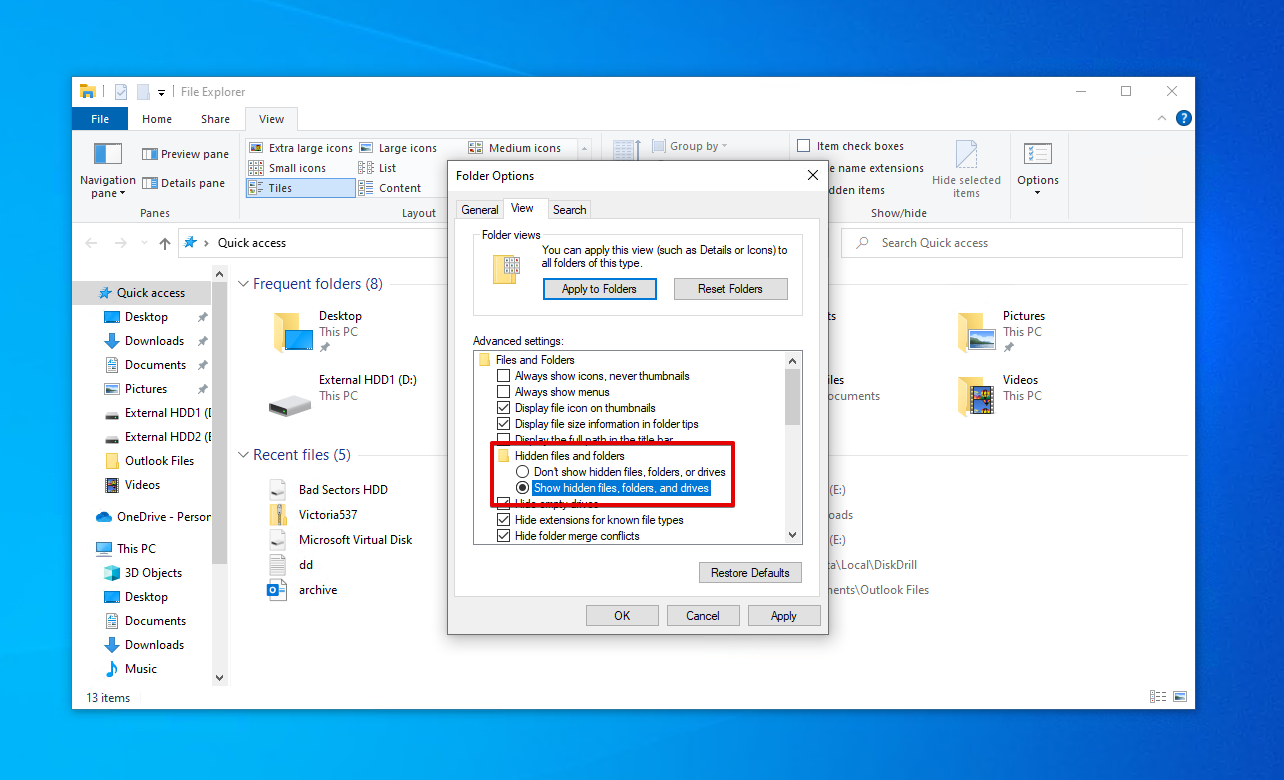
- Click Apply, then OK.
Method 4:Remove ‘Hidden’ Attribute with Command Prompt
If you prefer using a command-line interface, there is a way for you to remove the ‘Hidden’ attribute from all files and folders in a specific directory. Bear in mind that all files affected will become visible once again, like regular data.
- Right-click Start and click Windows PowerShell (Admin). This can also be done using Command Prompt or Terminal (for Windows 11).
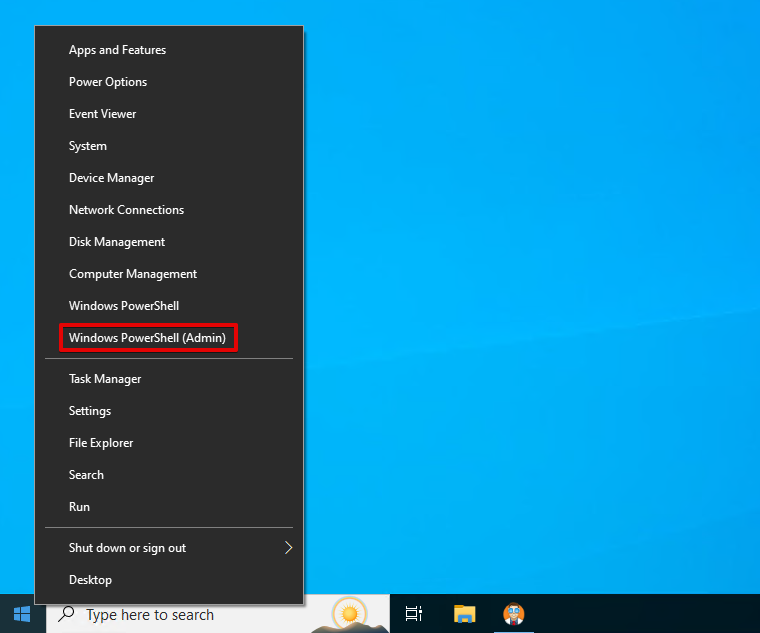
- Type
attrib -h -r -s /s /d D:*.*. Replace D with your own drive letter/path. Press Enter.
For any files or folders it cannot modify, it will simply say Access denied.
How to Recover Files That Disappeared From Hard Drive
If the files vanished from the external hard drive due to data loss, you can quickly and easily recover them using Disk Drill Data Recovery, a reliable and easy-to-use data recovery tool. Using Disk Drill, you can scan your external hard drive for lost or deleted files and recover them. This works for essentially any brand of hard drive, from Seagate to Samsung. It also includes a free drive backup feature we’ll use to safely create a full copy of the drive.
Follow these instructions to recover missing files from an external hard disk using Disk Drill:
- Download and install Disk Drill.
- Click Drive Backup.

- Select your external hard drive, then click Byte-to-byte Backup.
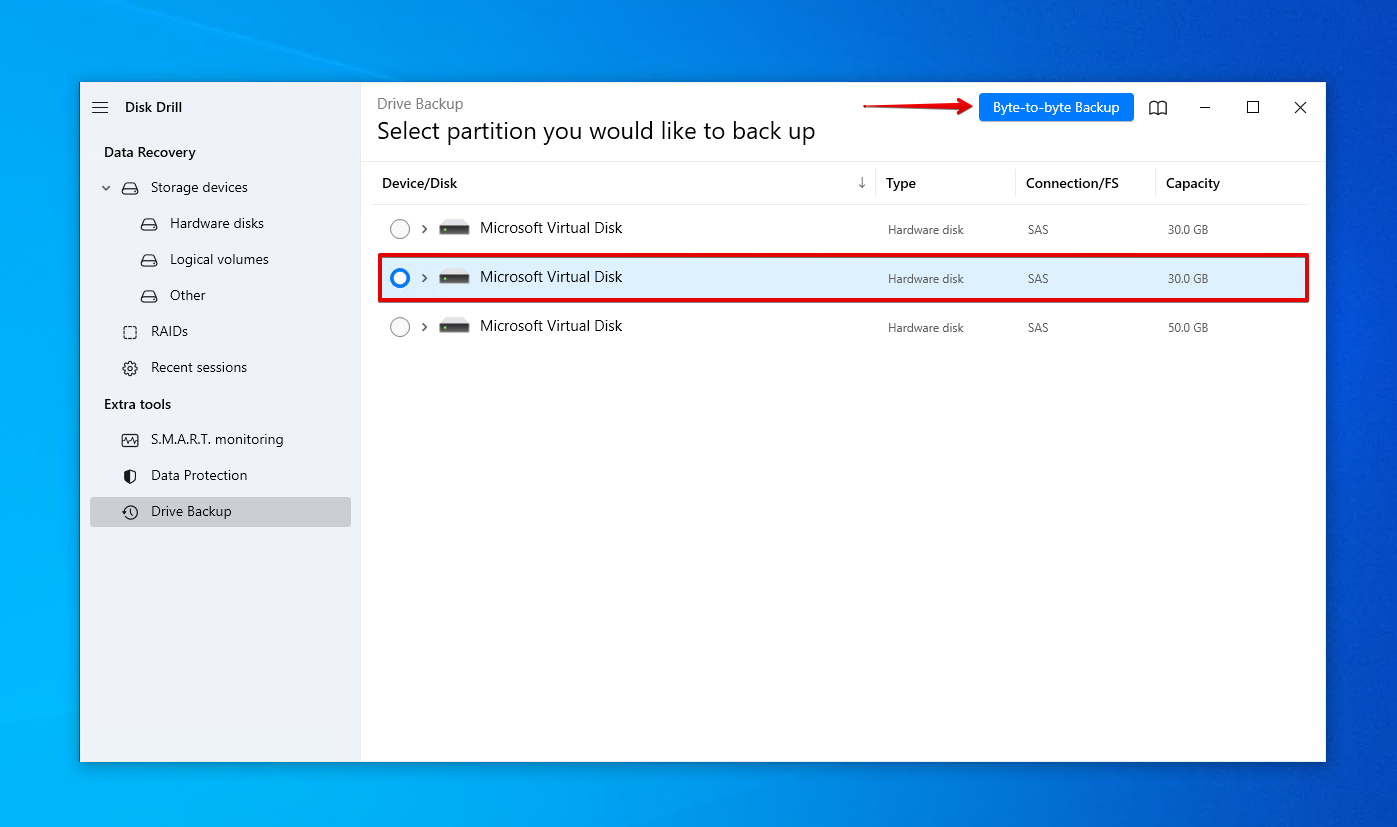
- Give the backup a name and choose a path (not on the same drive you’re recovering from). Click OK.

- Return to Storage devices and assign the newly created disk image.

- Select the external hard drive image and click Search for lost data.
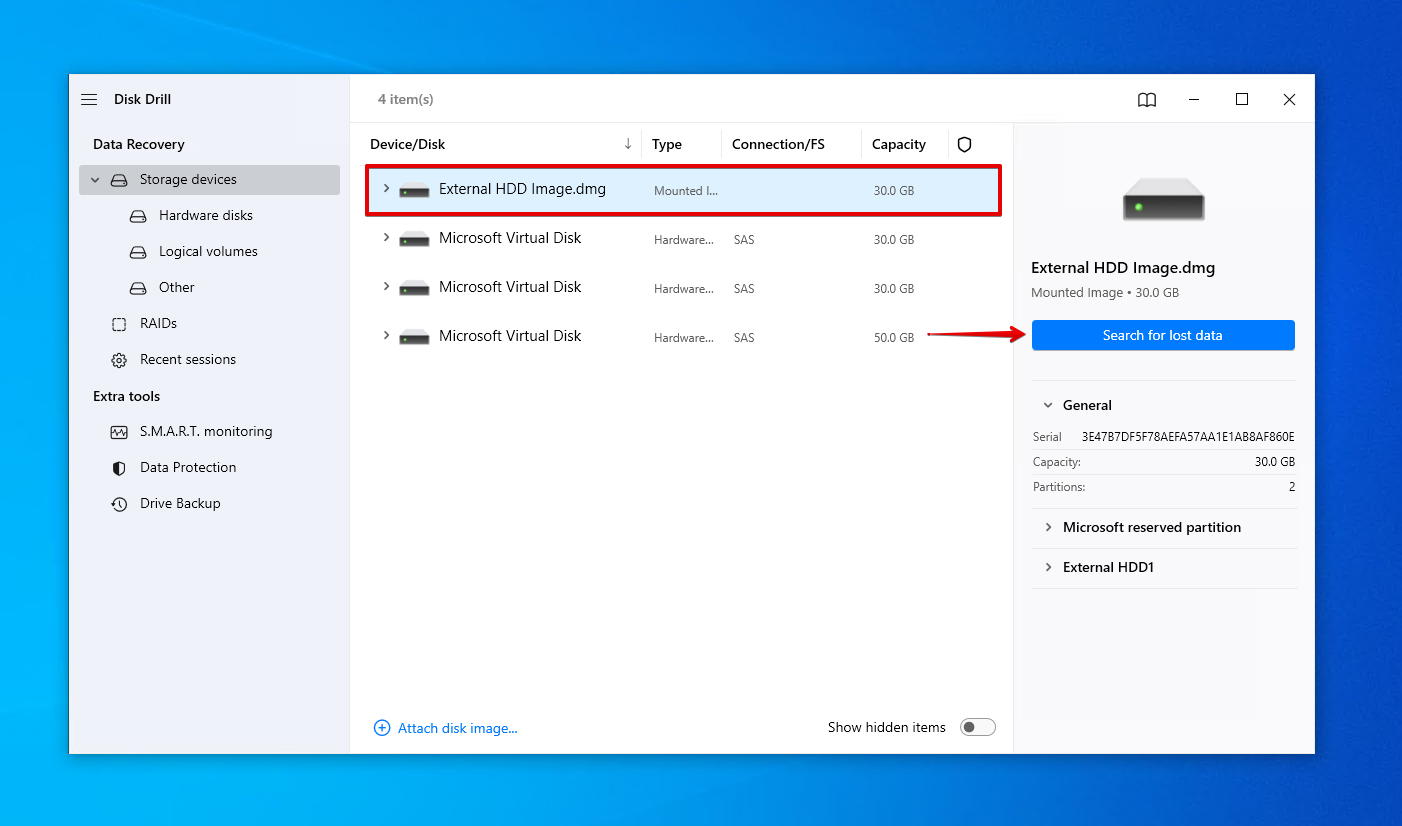
- Click Review found items to see what Disk Drill found on your external hard drive. Alternatively, click Recover all to restore everything.
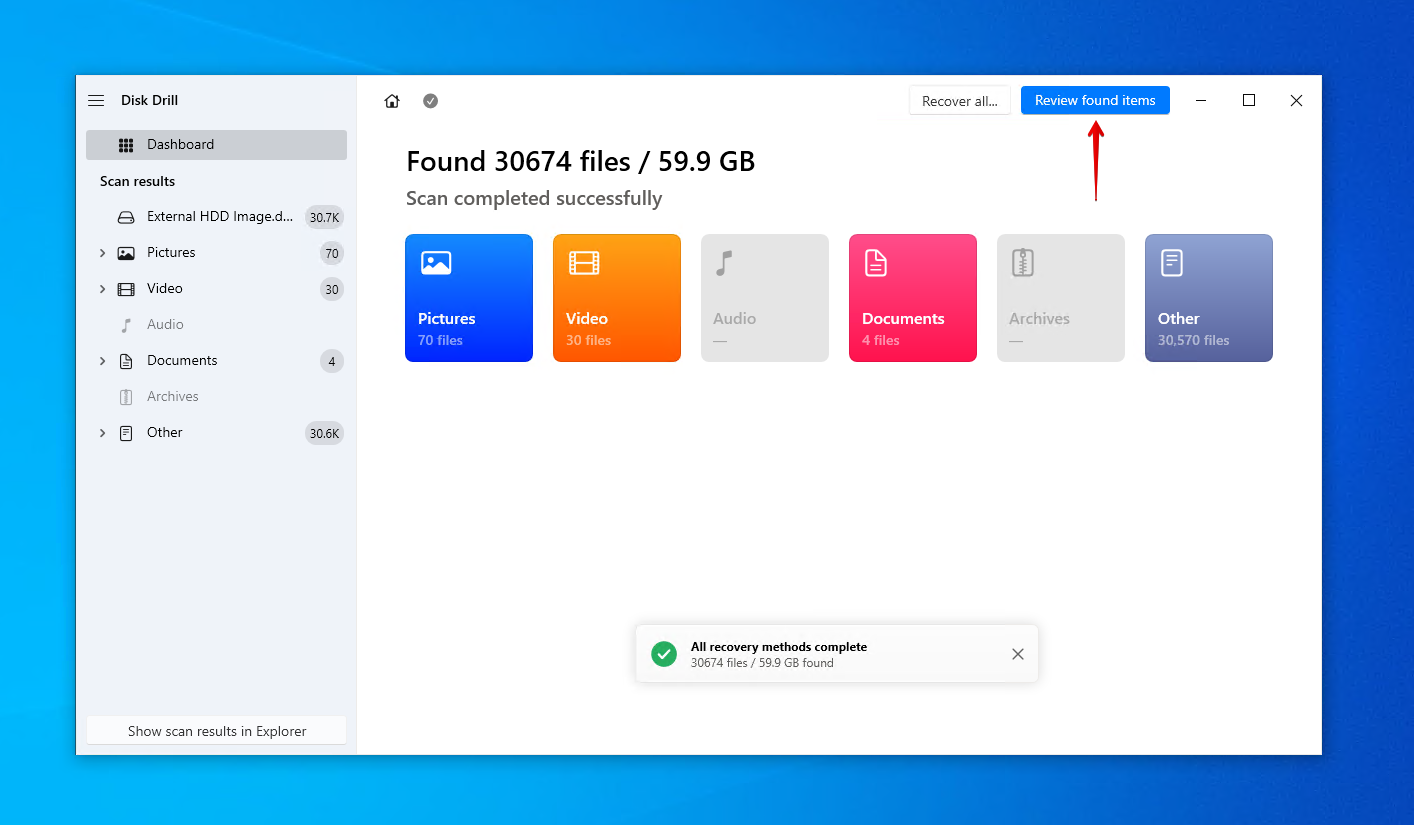
- Mark the files you want to recover from the external hard drive. Use the filter buttons to organize the results, and the preview panel to see what you’re recovering. When you’re ready, click Recover.

- Choose a safe recovery location (not on the same hard drive you’re recovering from), then click Next.
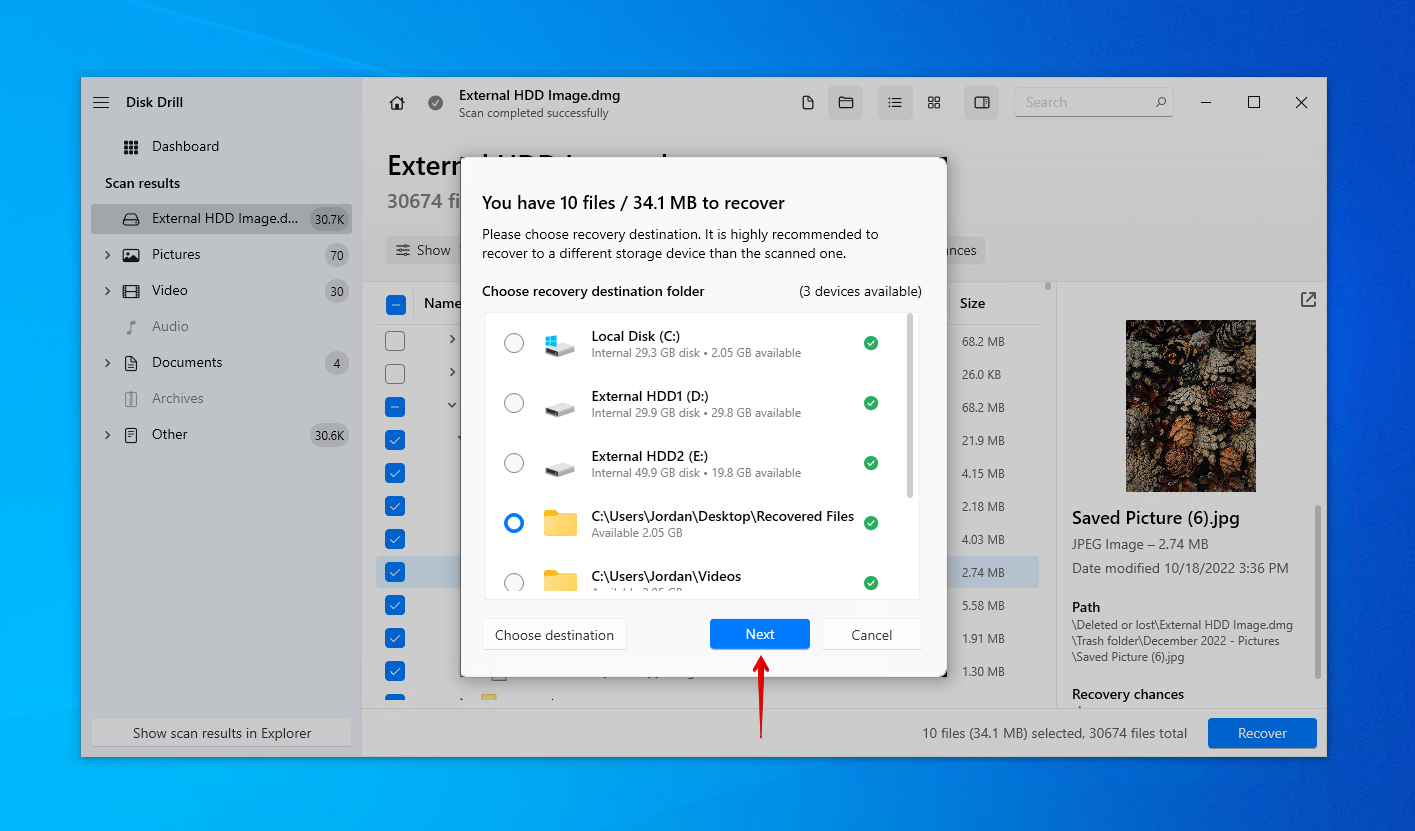
Disk Drill is your savior for basically any data loss scenario, from accidentally deleted files to corrupted hard drive recovery. Once your data is safely restored, now is your chance to implement a reliable backup solution. Check out File History. It’s free and comes included with Windows.
Conclusion
If your files suddenly disappeared from your external hard drive, you should act quickly as they may be in a vulnerable state. Start by searching for your files using Windows Search. Next, show hidden files and see if they’re still where they’re supposed to be. If these methods fail, you should recover the files missing from the external hard drive.
Download and install Disk Drill on your computer. Create a copy of your external hard drive and scan it for lost or deleted files. Recover them, then create a backup of your data to protect it going forward.
FAQ
- Open File Explorer.
- Click View > Options > Change folder and search options.
- Click View. In Advanced Settings, enable Show hidden files, folders, and drives.
- Click OK.
- Right-click Start and click Windows PowerShell (Admin).
- Type attrib -h -r -s /s /d D:\*.*. Replace D with your drive letter/path.
- Press Enter.


